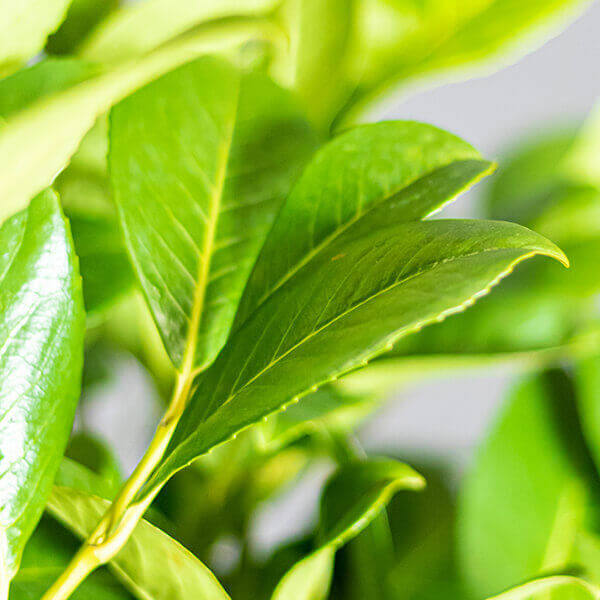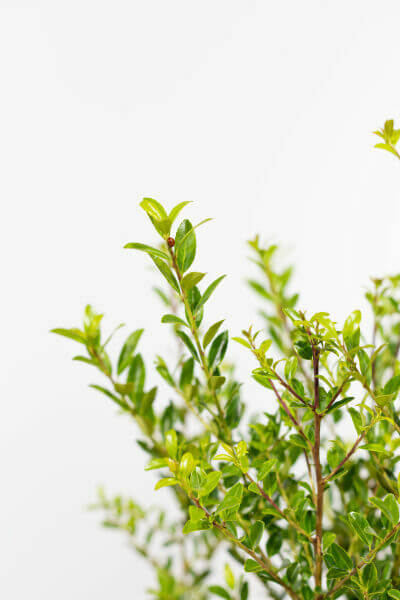Fast-growing Hedge Plants
Enhance your garden's allure with lavish hedge ranges such as Yew (Taxus), Thuja, Laurel, Photinia, and Bamboo, commemorated for their structural integrity and ecological benefits.
Yew and Thuja offer evergreen coverage and winter resilience, while Laurel uses rapid growth and broad, aromatic leaves.
Photinia adds seasonal appeal with its dynamic red foliage, and Bamboo lends a low-maintenance, tranquil ambiance.
These hedges improve air quality, minimize sound, and create tranquil, personal areas.
Proper planting, spacing, and maintenance guarantee vigorous development and ecological harmony.
Check out how these lavish ranges can elevate your garden's beauty and well-being.
Secret Takeaways
Change Your Garden With Lush Hedge Varieties
- Select Yew for its thick, evergreen development and unparalleled longevity.
- Select Laurel for its quick development and broad leaves, making sure fast personal privacy.
- Choose Photinia for its vibrant seasonal foliage, which turns a striking dark red.
- Make use of Bamboo for a low-maintenance, winter-hardy hedge with aesthetic appeal.
- Space plants 2-3 per meter and prune regularly for optimal growth and health.
Popular Hedge Plants
When transforming a garden with lush hedge varieties, it's necessary to think about popular hedge plants such as Yew, Thuja, Laurel, and Photinia due to their distinct characteristics and benefits.
Yew (Taxus) is highly esteemed for its longevity and thick, green development, making it a prime choice for sustaining landscapes.
Thuja is noted for its evergreen foliage and robust winter durability.
Photinia includes seasonal vibrancy with red leaves that darken with time, developing dynamic visual appeal.
Laurel uses fast growth and fragrant, broad leaves, suitable for quick personal privacy.
Furthermore, Bamboo is an outstanding option for ambiance, providing a low-maintenance, winter-hardy alternative that enhances the garden's aesthetic with its sophisticated, swaying canes.
These selections accommodate a range of horticultural needs and preferences.
Benefits of Garden Hedges
Garden hedges use a multitude of benefits, making them an important addition to any landscape. These natural barriers are cost-efficient to implement and provide considerable wind defense, enhancing air circulation and contributing to sound decrease. The thick foliage of hedges like Thuja and Beech makes sure privacy by obstructing exposure, producing a tranquil and remote environment.
Hedges likewise play a crucial role in microclimate regulation, providing a stable environment that promotes plant growth and reduces temperature changes. Their elaborate leaf structures filter toxins, improving air quality and contributing to a healthier garden ecosystem.
Moreover, hedges master sound decrease, soaking up and deflecting acoustic waves to lower ambient noise levels. This dual functionality of providing both visual and acoustic privacy enhances the overall harmony and visual appeal of any garden.
Planting and Maintenance Tips
For an effective hedge, precise preparation of the planting area is essential. Ensure the soil has correct pH and drain to support strong root advancement.
Space the plants appropriately for the picked species. Water the hedge frequently throughout its preliminary growth phase, changing as needed with seasonal changes.
Execute a methodical pest control and illness avoidance strategy, utilizing natural or chemical treatments when essential. Frequently inspect for aphids, termites, and fungal infections.
Apply mulch to keep moisture and reduce weeds. Seasonal pruning promotes dense development and air flow, important for plant health.
Following these guidelines will assist you cultivate a dynamic, well-maintained hedge that boosts the beauty of your garden.
Spacing and Cutting Standards
Spacing and Cutting Guidelines
Correct spacing and cutting are crucial for cultivating healthy, aesthetically appealing hedges. Adequate spacing makes sure each plant receives enough nutrients, light, and airflow.
Follow these standards for optimal hedge upkeep:
- Spacing: Position hedge plants 2-3 plants per meter to motivate robust growth.
- Pruning Strategies: Regular pruning is vital for maintaining preferred hedge height and shape. Cut new development in summer and cut down older wood throughout winter.
- Seasonal Care: Change trimming techniques and schedules according to seasonal requirements to make sure plant health.
- Hedge Height: Routinely display and trim to preserve the wanted hedge height and achieve uniform looks.
Sticking to these actions will guarantee your hedge thrives, improving both the appeal and functionality of your garden.
Choosing the Right Hedge
Picking the Right Hedge
Selecting the suitable hedge includes examining factors such as mature height, foliage density, Additional reading and environmental durability. Effective hedge plant choice needs comprehending each species' development qualities and site-specific flexibility.
For example, Yew (Taxus) provides excellent durability and thick development, while Thuja is significant for its winter resilience. Additionally, considering maintenance requirements is crucial; fast-growing types like Laurel or Privet demand routine trimming, whereas low-maintenance choices like Bamboo or Ivy may be more suitable for those looking for very little upkeep.
Environmental elements such as soil type, light schedule, and wetness conditions should also direct the choice procedure. This mindful technique ensures the selected hedges will prosper, supplying both aesthetic and functional benefits to the garden landscape.
Delivery and Planting Guidance
To ensure your hedge plants thrive, they need to be provided by specialized couriers and planted quickly upon arrival.
Follow these important steps for effective planting:
- Soil Preparation: Enhance the soil with organic matter to enhance drain and nutrient content.
- Planting Depth: Create a trench two times the width and equal to the depth of the root ball.
- Watering Techniques: Water thoroughly after planting, keeping the soil consistently wet but not filled.
- Mulching: Apply a layer of mulch to retain wetness and suppress weeds.
Client Assistance and Service
Provided the essential role of prompt help in horticultural pursuits, our consumer assistance team is available six days a week through telephone, email, and social networks to use expert suggestions and swiftly deal with any concerns. Their devotion to fast action times makes sure consumer satisfaction by resolving queries associated with plant health, ideal planting techniques, and upkeep schedules.

Telephone
Six days a week
Within 24 hours
This extensive support system, strengthened by an excellent 9.3/ 10 consumer ranking, highlights our commitment to enhancing the gardening experience for every customer.
Regularly Asked Concerns
How Long Does It Take for Hedge Plants to Establish?
Hedge plants generally require one to three years to become fully established, with the exact period differing by types and growing conditions.
Reliable care throughout this vital duration is vital for robust growth. Consistent watering, vigilant weed control, and appropriate fertilizer application are pivotal in promoting strong root advancement.
For instance, fast-growing types like Laurel may establish faster, while slower-growing ranges such as Yew may take longer. Persistent maintenance accelerates the facility procedure, resulting in dense and healthy hedges.
What Are the Best Hedge Plants for Personal Privacy?
The concern of the very best hedge plants for privacy includes assessing evergreen and deciduous options.
Evergreen hedges like Thuja, Laurel, and Cypress provide year-round protection, guaranteeing continuous personal privacy.
On the other hand, deciduous hedges such as Beech provide seasonal personal privacy, shedding leaves in cooler months.
Key maintenance pointers for personal privacy hedges consist of regular trimming, fertilizing in spring, and correct spacing-- usually 2 to 3 plants per meter.
Additionally, constant watering and persistent weed removal are vital for promoting healthy, dense growth.
Can Hedge Plants Draw In Wildlife to My Garden?
Yes, hedge plants can attract wildlife to your garden by supplying important advantages like shelter, food, and nesting sites, thus improving regional biodiversity. Yew, holly, and laurel are excellent for bring in birds, while ivy supports a variety of bugs.
Nevertheless, it is essential to keep in mind that there are some disadvantages, such as increased upkeep to manage insects and routine upkeep. Thoroughly picking and preserving hedge ranges can help balance these advantages and drawbacks, ultimately promoting a sustainable and vibrant community in your garden.
Exist Any Blooming Hedge Plants Available?
Yes, there are flowering hedge plants available that can improve the appeal of your garden.
For example, Elaeagnus, also known as Olive Willow, produces aromatic white flowers in the fall, including a touch of elegance.
Photinia, another popular choice, showcases dynamic red leaves that grow into an abundant green, creating a dynamic visual impact throughout the seasons.
To guarantee these plants grow, it's necessary to practice proper pruning methods and seasonal maintenance, such as trimming new development in the summer season and cutting back in the winter.
These measures will help preserve the health and aesthetic appeal of your flowering hedges.
How Do I Prevent Insects in My Hedge Plants?
To avoid insects in hedge plants, utilize natural insect control approaches and keep appropriate hedge care. Present helpful pests like ladybugs, which victimize damaging bugs, to develop a well balanced environment.
Frequently check your hedges for indications of problem and promptly get rid of any afflicted parts to avoid the spread. Guarantee the health of your hedges by applying balanced fertilizers and providing adequate water.
Make use of mulching to maintain soil wetness and appropriate spacing to decrease plant stress and promote robust development. These practices jointly assist in lessening pest issues and keeping a healthy hedge.
Conclusion
In essence, picking the best hedge varieties such as Yew, Thuja, and Laurel can change any garden into a serene haven. These plants provide year-round plant, improve aesthetic appeal, and deal useful benefits like sound reduction and wind protection.
Correct planting methods, accurate spacing, constant watering, and seasonal trimming are vital for optimum growth.
Reputable delivery services and skilled customer assistance guarantee a seamless experience from purchase to planting, making it easier than ever to elevate your outside space.
Garden hedges provide a wide range of advantages, making them a valuable addition to any landscape. These natural barriers are cost-efficient to execute and provide considerable wind protection, improving air circulation and contributing to noise decrease. The dense foliage of hedges like Thuja and Beech makes sure privacy by blocking presence, producing a tranquil and secluded environment.

Pruning Techniques: Regular pruning is necessary for maintaining preferred hedge height and shape. Cut brand-new growth in summer and cut back older wood throughout winter.